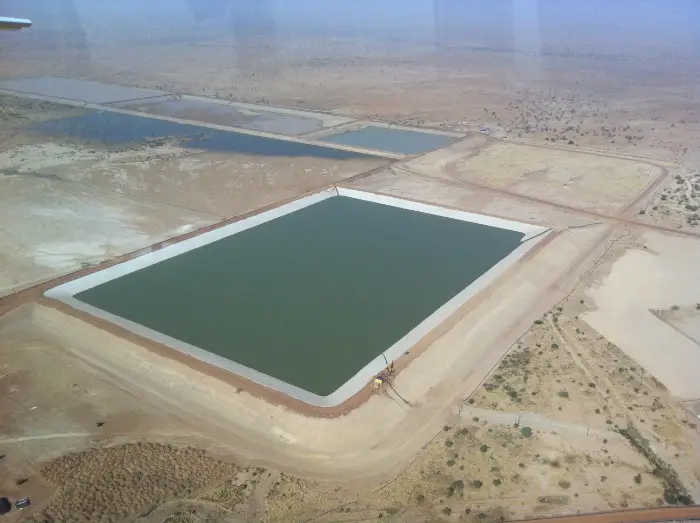In Africa, mining regulations are becoming stricter. Solmax, now the world’s largest manufacturer of geosynthetics, works extensively across Africa. With a full range of geosynthetics, proven products with a reputation for quality and reliability, we are delivering solutions that meet the needs of some of the toughest environments and projects.
“Our customer base in Africa reaches from South Africa to the Ivory Coast and Port Said, and across industry sectors. We sell direct to the client, usually engaging with the construction and design engineers, as well as installation service providers appointed by the client. As an industry leader of over 40 years, we have extensive experience in tailoring solutions that meet engineering and regulatory requirements, and pride ourselves on working with our clients to find solutions that really work and deliver on investments.
In addition to the premium we place on meeting our promises on supply and delivery—we understand the complexity and potentially dire implications of delay on large, multi-partner projects—Solmax differentiates itself on its approach. Our products, whether part of single or multi-layer systems, do three things: they contain, drain and protect. Our geosynthetics are designed to do that exceeding well. They also protect the earth—preventing toxic materials from polluting or damaging the soil, air and water. We rate this as highly as we do helping our clients deliver on their project requirements.
The other differentiator is our push to drive innovation across the sector, developing solutions that address old challenges in new, more effective and efficient ways. Our conductive-backed liners are a great example of this.
Innovation drives progress, safety
Geosynthetics are critical to contain waste and keep hazardous outputs from mines and industrial processes from contaminating the environment. But even the best liners can puncture. This can put a company’s investment, reputation, and the environment at risk. The value of our liner is that the conductive bottom surface gives installers the ability to test covered or exposed geomembranes without the addition of a physical conductive layer (a costly, laborious and not always accurate way of testing traditional non-conductive geomembranes).
What this does is effectively raises the bar on electric liner integrity surveys. With this modern approach, Solmax aims to help build repeatable liner testing and remediation into containment design—increasing ease of testing to drive greater accountability and safety, and meet increasingly stringent regulations.
And what separates the Solmax Leak Location Conductive liner from others on the market is that it is fully customizable to the project and environment. The liner is made of a co-extruded HDPE or LLDPE with a bottom layer that is made of electrically conductive carbon black. The top layer can therefore be specified by our clients—it can be made of HDPE or LLDPE, be smooth or textured, and be coloured white, black or green.
Here’s how we are helping clients across Africa.
Ivory Coast to Burkina Faso and Egypt
Endeavour Mining Corporation selected Solmax as preferred lining partner for its tailings storage facility project at Ity Gold Mine based on the successful projects we’d delivered at its Houndé and Karma gold mines. Previously a heap leach operation, recent near-mine exploration success has increased the resource base and enabled a carbon-in-leach (CIL) processing plant to be built.
The facility has a planned impoundment volume of 30.4Mt or 23Mm³ in five years’ time, and was designed with an underdrainage and a leakage collection and recovery system. The dam was lined with a geosynthetic barrier made from high-density polyethylene (HDPE) geomembrane with high resistance to UV exposure, weathering and harsh chemicals which will exceed the service life and aftercare period of the mine by at least 50 years. Delivering the project ahead of schedule and below budget contributed to the project’s early success, and the CIL plant achieved full nameplate capacity two months ahead of schedule in early Q2-2019.
Another Solmax lining project worth mentioning was the three-year project in Burkina Faso.
In 2008, IAMGOLD Engineering and Construction acquired the Essakane Gold Mine in Burkina Faso and quickly implemented mine, plant, and support infrastructure. The plant process water was obtained from storage basins built from easily accessible, low permeability saprolite (clay) material. However, operators soon discovered that the potential for seepage in the storage basins was greater than they had foreseen. To ensure a sufficient raw water supply, they wanted to build a new reservoir for bulk water storage and line it, then line the two existing reservoirs.
IAMGOLD chose Solmax’s white HDPE geomembrane combined with local clay to form a watertight composite barrier for water management at a gold mine. Solmax supplied 700,000m2 of HDPE, also providing technical assistance during the design and installation phases. The barrier solved the water loss issue and increased the ponds’ holding capacity.
In Egypt, three million square meters of Solmax’s double-sided textured HDPE geomembrane were used to line canals on a Mega Aquaculture Project. The advantages of the product for this project are threefold: it enables slope containment and stability while improving concrete adhesion; it keeps freshwater volumes consistent and prevents contamination from groundwater; and it contains waste products drained from the ponds.
Our Leak Location Conductive liner has been used in a number of projects globally, among others to line a stormwater reservoir at a US copper mine as part of a multi-layer system, and a brine pond where 277,000 m2 of conductive liner was used.
Progress, reliability, fast access
As Solmax continues to grow – we just acquired TenCate Geosynthetics which will expand our ability to meet the needs of both containment and infrastructure applications – we are increasing our manufacturing footprint globally. Our clients are our number one priority and our sales and engineering teams are easily contactable,” explains Eike Hauberg.

